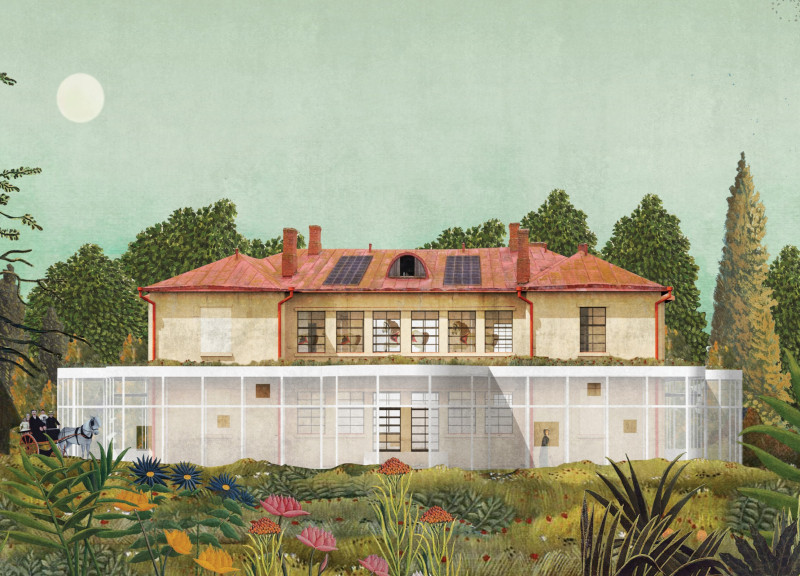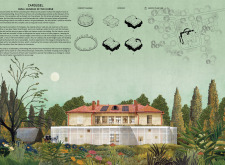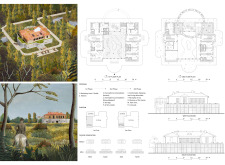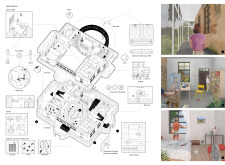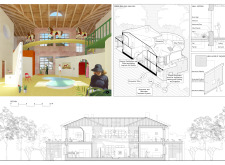5 key facts about this project
Visual and spatial dynamics are essential aspects of the design. The building features a circular layout that encourages interaction among users and fosters a sense of community. The architectural design incorporates elements that promote transparency, such as the use of perforated aluminum cladding, which allows natural light to penetrate the interior spaces while creating a connection between indoors and outdoors. This design choice not only enhances the aesthetic quality but also promotes energy efficiency.
Sustainable practices are integral to the project's architecture. Green roofs are incorporated to improve environmental performance, offering additional insulation and reducing stormwater runoff. Furthermore, a rainwater harvesting system ensures a sustainable water source for operations, while solar panels supplement energy needs. These strategies exemplify a design ethos focused on environmental stewardship and resource conservation.
Authenticity is preserved through the retention of original materials, such as brick, which adds historical significance to the contemporary design. Exposed wood also reinforces a warm, inviting atmosphere, resonating well with the natural surroundings.
Unique features include the integration of a carousel as part of the museum's exhibits, which provides an interactive element to the visitor experience. This design choice sets the museum apart by merging playful engagement with educational content.
Design outcomes reflect a commitment to functionality and flexibility. The first phase consists of workshop areas and communal spaces, while subsequent phases introduce additional amenities such as overnight accommodations for artists and public exhibition areas. This phased development approach allows for gradual integration of community needs and artistic expressions, enhancing the overall functionality of the museum.
To gain a more detailed understanding of the architectural plans, sections, and designs involved, readers are encouraged to explore the project's presentation further. This will provide valuable insights into the innovative architectural ideas that inform the Omul Museum of the Horse.


